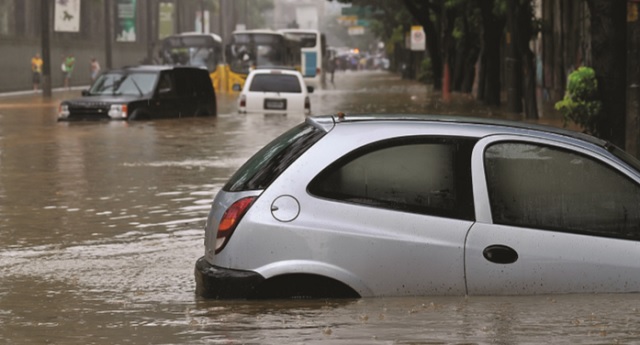
The dos and don’ts
Kampala, Uganda | MOTORING GURU | As the annual long rains of March to May set in, chances of getting caught up in a flood rise. When that happens, know that your vehicle could be rendered irreparable or else, it might require quite some money and effort to get it back into drivable shape.
Depending on how deeply the car is submerged, it might end up with extensive rust and corrosion, or severe electronics damage. Even if the damage is not apparent immediately, it could appear later.
As a first step, ensure that you do the following:
Quickly assess the extent of your car’s flood damage, and weigh repair costs against the cost of replacing your car. Depending on how deeply the car is submerged, consider not restarting your car as this will cause more dam- age if there is water in the engine.
Act quickly. Get the car towed out of the water as quickly as possible and set on higher ground.Start drying out your vehicle as quickly as possible.
Drain oil and transmission fluids and lubes before towing. Pay special attention to th e engine. Get an expert mechanic to check it out. If there are water droplets on the oil dipstick, it might indicate water in the engine.
If that’s the case, the cylinders, which are supposed to compress air instead of water, will be broken. Replace them. Change the oil and transmission fluid. You’ll want to do this again after the car is drivable and you’ve gone sev- eral hundred kilometres.
Clean the interior. If floodwaters went inside your car, remove carpets and dry out seats with a soak cloth. Remove seats and seat cushions if possible, and dry them in the sun. Turn the A/C on and use strong air freshener to remove the difficult smell of mold and mildew, especially from wet seats and AC vents. If damage is extensive reupholster the entire car.
Get the car cleaned as a fine layer of silt will cover everything; including difficult to clean engine compartments, air cleaner, and spaces in the interior.
Check the spare tire compartment for signs of moisture, inside the head- lights for standing water or fog. Check electrical components and replace damaged parts. Ensure that the radio and other signals work. Check fuses box and battery terminals.
Check the fuel tank and line. If you note any water (which would naturally separate from the fuel), you’ll want to empty the tank completely. If the windows of your car aren’t sealed very well, you might hear water sloshing around in your car.
That is flood water trapped inside your doors. If you look along the bottom of the door, you’ll see several plugs. Use a screwdriver to open them and let water will drain out.
 The Independent Uganda: You get the Truth we Pay the Price
The Independent Uganda: You get the Truth we Pay the Price


